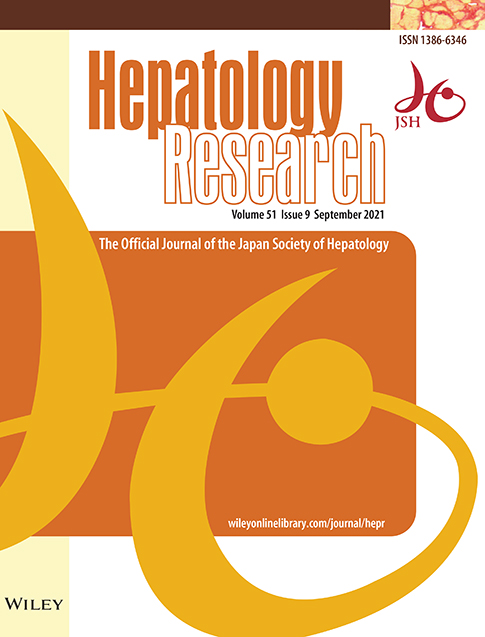Pathological characteristics of liver sinusoidal thrombosis in COVID-19 patients: A series of 43 cases
Abstract
Aim
Coronavirus disease (COVID-19) is characterized by pneumonia with secondary damage to multiple organs including the liver. Liver injury (elevated alanine aminotransferase [ALT] and aspartate aminotransferase [AST]) often correlates with disease severity in COVID-19 patients. The aim of this study is to identify pathological microthrombi in COVID-19 patient livers by correlating their morphology with liver injury, and examine hyperfibrinogenemia and von Willebrand factor (vWF) as mechanisms of their formation.
Methods
Forty-three post-mortem liver biopsy samples from COVID-19 patients were obtained from Papa Giovanni XXIII Hospital in Bergamo, Italy. Three morphological features of microthrombosis (sinusoidal erythrocyte aggregation [SEA], platelet microthrombi [PMT], and fibrous thrombi) were evaluated.
Results
We found liver sinusoidal microthrombosis in 23 COVID-19 patients (53%) was associated with a higher serum ALT and AST level compared to those without (ALT: 10-fold, p = 0.04; AST: 11-fold, p = 0.08). Of 43 livers, PMT and SEA were observed in 14 (33%) and 19 (44%) cases, respectively. Fibrous thrombi were not observed. Platelet microthrombi were associated with increased ALT (p < 0.01), whereas SEA was not (p = 0.73). In COVID-19 livers, strong vWF staining in liver sinusoidal endothelial cells was associated with significantly increased platelet adhesion (1.7-fold, p = 0.0016), compared to those with weak sinusoidal vWF (2-fold, p < 0.0001). Sinusoidal erythrocyte aggregation in 19 (83%) liver samples was mainly seen in zone 2. Livers with SEA had significantly higher fibrinogen (1.6-fold, p = 0.031) compared to those without SEA in COVID-19 patients.
Conclusions
Liver PMT is a pathologically important thrombosis associated with liver injury in COVID-19, while SEA is a unique morphological feature of COVID-19 patient livers. Sinusoidal vWF and hyperfibrinogenemia could contribute to PMT and SEA formation.
CONFLICT OF INTEREST
The authors have no conflict of interest.




